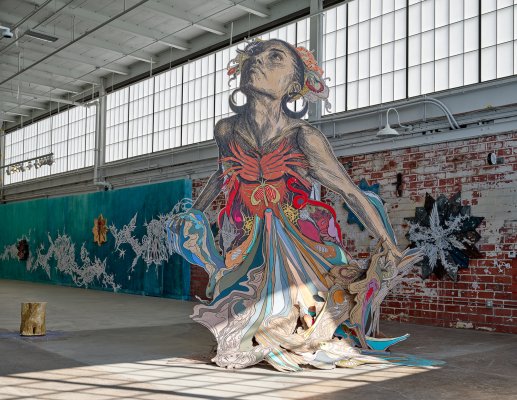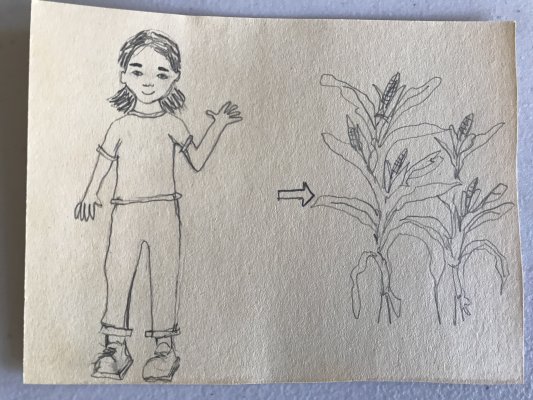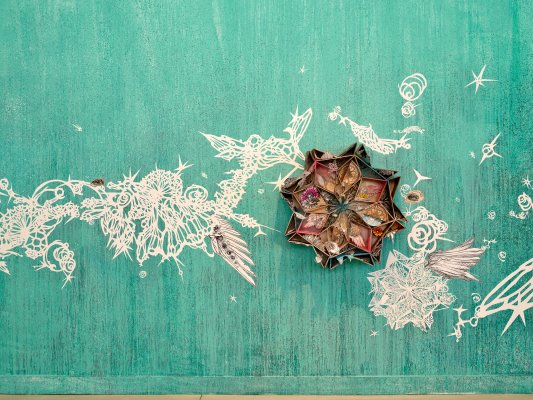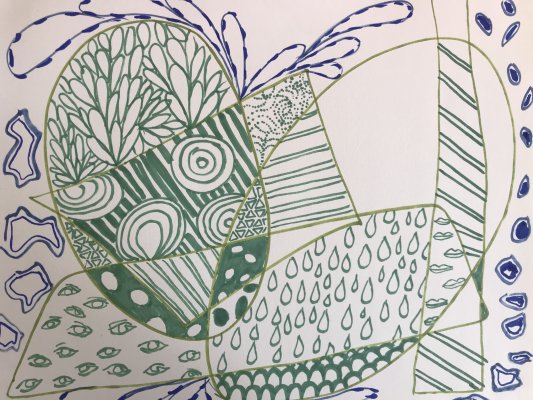Objective
Students will find a myth that is interesting to them and create a stop-motion animation with a flipbook. As an option, the animation can be turned into a video with a stop-motion video application.
Fun Fact: Swoon’s friend posed for this work of art
AK Collection Connection: Grace Hartigan’s When the Raven Was White, 1969
Vocabulary
Myths: stories from all around the world that tell why the world was created and why certain things happen; many tell of gods, heroes, and events that some people of ancient times believed to be true
Materials
- Multiple sheets of paper (or index cards or Post-Its)
- Pencil
- Eraser
- Dark pen or marker
- Something to bind with (binder clips, stapler, tape, hole punch with string or twist ties)
- Colored pencils or markers (optional)
Optional (stop-motion video):
- A computer or tablet that has an application to create a stop-motion video (there are many free ones such as Stop Motion Maker and PicPac Stop Motion & TimeLapse)
Discussion
What stories from mythology are you familiar with? Why do you think you know those stories and not others? Why do you think an artist would use a myth as inspiration?
If you were to create a goddess of the sea, what would she look like? Would she have any distinguishing features? Why do you think the ancient Greeks portrayed her with “crab-claw horns, seaweed for clothes, and a ship's oar in her hand”?
Artmaking Activity
Ask students to research and pick a story from Greek mythology, like Swoon, or one from their own culture. Once they pick a story, ask your students to think of one object or creature from the myth that goes through a transformation (such as water into a sea goddess or a raven turning from white to black).
1. Practice drawing what your object or creature will look like at the beginning and end of your animation. Select which parts will go through a “transformation.”



